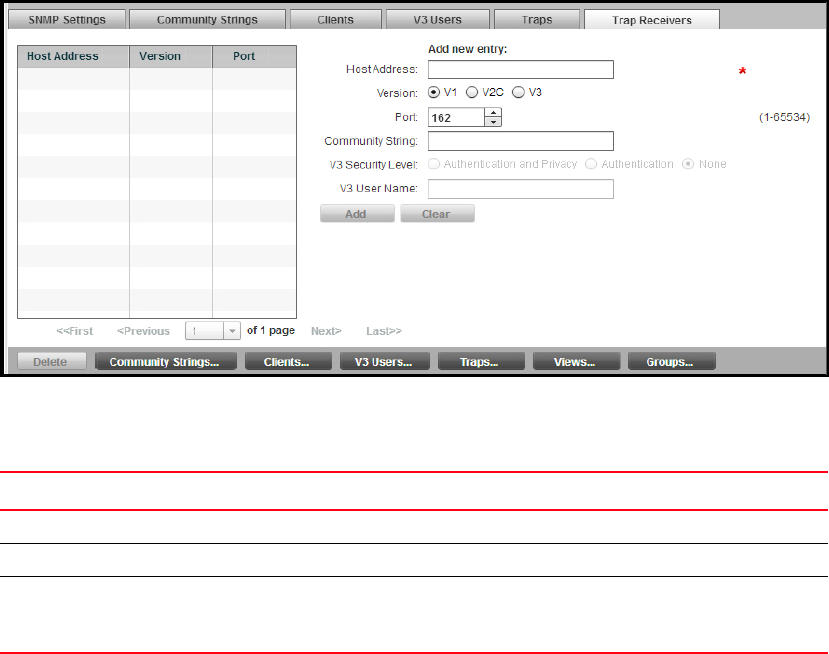(Supporting ADX v03.1.00) Owner's manual
Table Of Contents
- Contents
- Preface
- Introduction to the Brocade Virtual ADX Web Interface
- Navigating the Web Interface
- Navigating the Dashboard
- Configuration Overview
- System Settings
- Network Settings
- Traffic Settings
- GSLB Settings
- Security Settings
- Monitoring Overview
- Viewing System Information
- Viewing Network Status
- Viewing Traffic Statistics
- Viewing Security Statistics
- Maintenance Overview
- Managing Software Images
- Restarting the System
- License Management
- Packet Capture
- Accessing the CLI
- Retrieving System Information for Technical Support
- Troubleshooting
- Config Template XML Schema
- Managing Config Templates through the CLI

Brocade Virtual ADX Graphical User Interface Guide 47
53-1003242-01
Device management
5
4. Click the Trap Receivers button at the bottom of the window.
The Trap Receivers page is displayed. See Figure 35.
FIGURE 35 Trap Receivers page
The SNMP Trap Receiver tab has the following controls. See Table 14.
Use the Trap Receivers table to perform the following functions:
• Select a single row in the table to populate the associated editing fields with the contents of
that row.
• Select one or more rows to enable the Delete button and delete trap receivers from the table.
• Click Clear to deselect all rows and empty the edit fields, making it easier to create a new trap
receiver.
In addition to the information in the table, this tab lets you set the following values:
• Community String: Community String to be used by this Trap Receiver.
• V3 Security Level: Security level to be used if V3 is selected as version. This is only active if V3
is selected as version. Options are:
• Authentication and Privacy
• Authentication
• None
• V3 User Name: User name to be used if V3 is selected as version. This is only active if V3 is
selected as version.
TABLE 14 SNMP Trap Receiver tab controls
Column Content
Host Address Host Address being monitored. Once created, it cannot be altered; it can only be deleted.
Version The version of the received trap. Options are V1, V2C, or V3.
Port The port number for this trap. (range: 1–65535, default 162).
Note: If you choose a value other than 162, make sure the device sending the trap is also
sending to the specified port.










